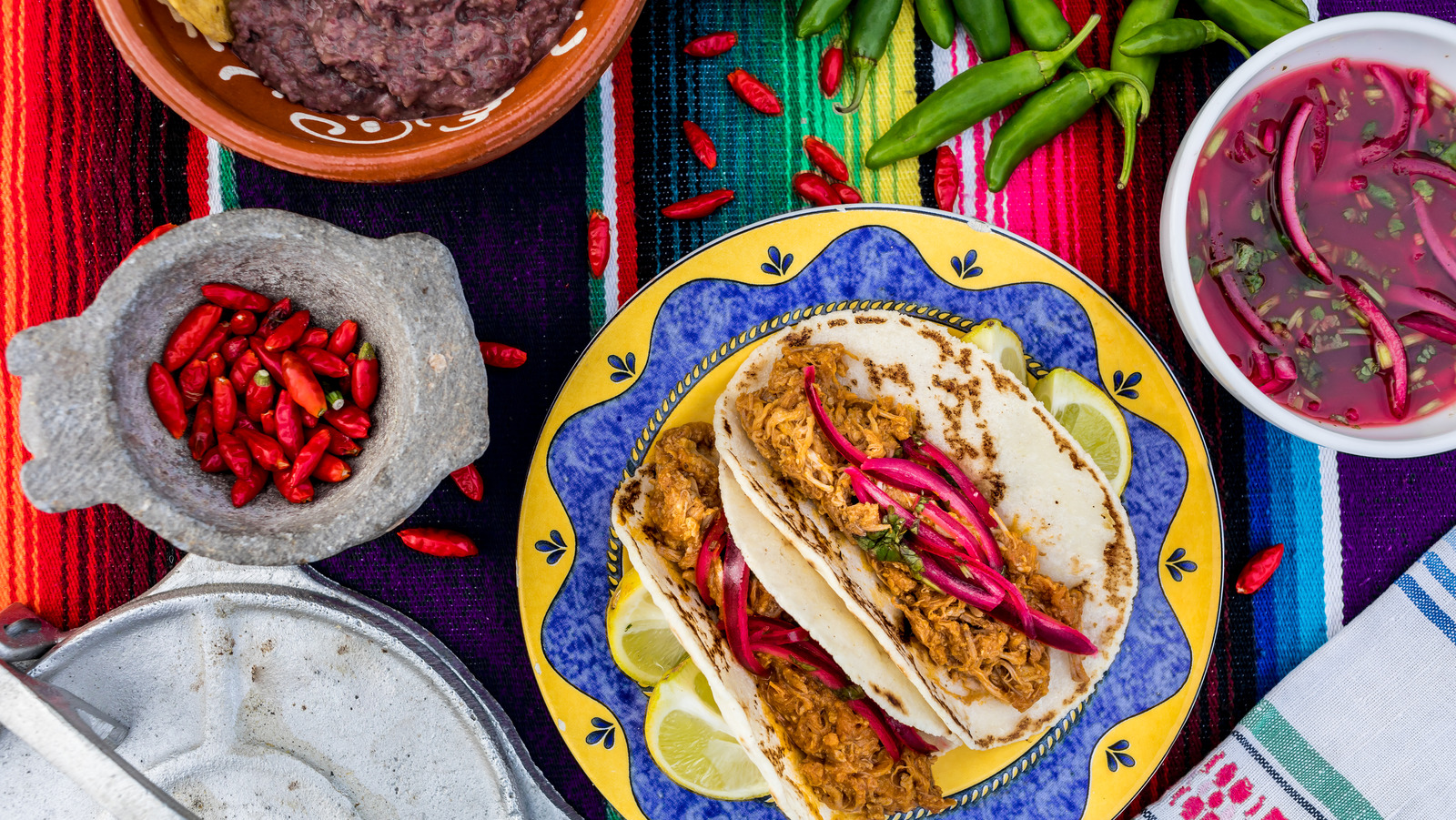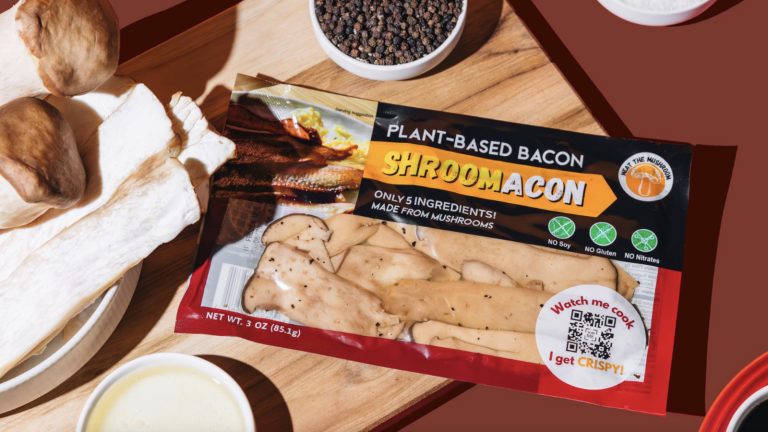We may receive a commission on purchases made from links.
There’s nothing quite like finding a great Mexican restaurant. That perfect first bite of a taco when all the ingredients work together because the chef knows what they’re doing — whether they’re a trained professional or someone’s grandmother with decades of experience. But what about the warning signs? What should we be looking for to avoid disappointment? From tortilla quality and salsa preparation to spice usage and cheese selection, knowing these key red flags can help you skip the duds and find the places really worth your time and money.
We’ve consulted two respected experts in Mexican cuisine. Yvette Marquez-Sharpnack is a celebrated cookbook author and food blogger who draws culinary inspiration from her mother and grandmother’s Mexican cooking. She shares her knowledge and recipes on her award-winning blog, MuyBuenoBlog.com. Her latest cookbook “Muy Bueno Fiestas” focuses on contemporary and traditional Mexican recipes for celebrations.
Our second expert, Illiana de la Vega is an award-winning Mexican-born chef and owns El Naranjo, a traditional Mexican restaurant in the heart of Austin, Texas. Her and her husband Ernesto Torrealba opened El Naranjo as a restaurant and cooking school in 1997 in Oaxaca, Mexico, where it received worldwide acclaim before relocating to Texas. These are red flags at a Mexican restaurants you just can’t ignore, according to these experts.
The tortillas aren’t homemade
According to Yvette Marquez-Sharpnack, the tortillas on offer will tell you a lot about the quality of a Mexican restaurant. The first red flag is serving cold, store-bought tortillas without properly warming them up. These mass-produced versions are completely lacking in texture and flavor. Illiana de la Vega adds that tortillas shouldn’t crack easily when folded — if they do, it’s a sign they aren’t freshly made. She also explains that an unnatural texture is a clear indicator of poor quality.
What should you look for instead? Marquez-Sharpnack explains that proper corn tortillas should have a distinct aroma of fresh corn when served. They should feel soft to the touch and remain pliable when folded around fillings, rather than becoming crumbly or developing a rubbery consistency. De la Vega emphasizes that fresh handmade tortillas are a hallmark of authentic Mexican restaurants.
While corn tortillas are most common throughout central and southern Mexico, flour tortillas have a legitimate place in northern Mexican cuisine. But regardless of type, what matters most is that tortillas arrive at your table fresh, fragrant, and warm — ideally straight from the comal or griddle. The best places treat tortillas with the respect they deserve as the foundation of the meal, not just as an afterthought.
Pre-made margaritas
The margarita — the benchmark cocktail of a Mexican restaurant — is going tell you a lot about the restaurants attitude to ingredients and preparation. “If margaritas are made from a pre-made mix or processed lime juice, it’s a red flag. Fresh ingredients, such as freshly squeezed lime juice and quality tequila, should be used,” says Illiana de la Vega.
A quality margarita is easy to spot before you even taste it, look for a natural pale yellow-green color that comes from fresh lime juice. Bright artificial green should immediately raise your suspicions. But the real test comes with the first sip. Can you taste distinct layers of flavor? Or is it one dimensional sweetness? Quality tequila made from 100% blue agave has a smooth, complex character. Cheaper mixto tequilas (containing only 51% agave) typically have a harsh burn and bitter finish that no amount of sugar can mask. The perfect margarita balances three elements: the bright tartness of fresh lime, a subtle touch of sweetener that doesn’t overwhelm, and clean tequila that warms rather than burns. Pre-made mixes tell a different story — they’re usually too sweet and lack the vibrant punch of fresh citrus. Your taste buds can tell the difference immediately, even if you’re not a tequila connoisseur.
Limited Mexican beverages
According to Yvette Marquez-Sharpnack, if a restaurant only serves soda and margaritas made from pre-mixed cocktail blends, you might not be in for the most authentic experience. These limited offerings often suggest the restaurant is catering to Americanized tastes.
What should you look for instead? Marquez-Sharpnack recommends seeking out places that serve aguas frescas. These refreshing fruit or grain-based drinks include horchata (a sweet rice and cinnamon beverage), jamaica (made from hibiscus flowers), tamarindo (tangy tamarind fruit drink), or seasonal offerings like agua de piña (pineapple water). Other good signs include Mexican Coke (made with cane sugar rather than high fructose corn syrup), colorful Jarritos sodas, or housemade café de olla (traditional Mexican coffee prepared in a clay pot with cinnamon).
During cooler months, Marquez-Sharpnack suggests watching for warming options like champurrado (a thick chocolate-based corn drink), atole (a warm corn-based beverage that comes in various flavors), or ponche navideño (a traditional holiday fruit punch served hot). For those interested in alcoholic options, Marquez-Sharpnack points to restaurants offering a thoughtful selection of quality mezcales and tequilas as another positive sign. Authentic restaurants might also serve proper micheladas (beer cocktails with lime juice, spices, and sauces) or palomas (tequila cocktails with grapefruit soda). A Mexican restaurant that takes pride in offering these traditional beverages likely brings the same attention to detail and authenticity to their food preparation, too.
A lack of authentic Mexican desserts
For Yvette Marquez-Sharpnack a good Mexican restaurant needs to have a proper selection of Mexican desserts. Restaurants that skip these traditional treats miss an important opportunity to show the rich diversity of Mexican cuisine beyond the main course.
What should you be looking out for? Marquez-Sharpnack loves seeing Mexican chocolate featured in desserts. This distinct chocolate typically includes cinnamon and sometimes a hint of chile for a complex, warming flavor profile unlike ordinary chocolate. Other classics to watch for include tres leches cake, sopapillas, and churros.
Marquez-Sharpnack gets particularly excited when restaurants offer pan dulce or Mexican sweet breads. “That’s something you don’t see very often — and it feels like such a nostalgic and special touch,” she notes. These colorful, decorative breads come in various shapes and flavors, from the shell-patterned conchas to the pig-shaped marranitos, and are deeply woven into Mexican food culture.
Seasonal dessert offerings demonstrate an even deeper commitment to tradition. Marquez-Sharpnack points to capirotada (a bread pudding made during Lent containing fruits, nuts, and cheese) or warming atole (a thick, corn-based hot beverage) in winter months as excellent signs of a menu that honors tradition throughout the year.
Fajitas
That dramatic sizzle and plume of steam as a fajita platter makes its way through the restaurant turns heads at every table. But to Illiana de la Vega, they are a red flag: “While fajitas may be delicious, they aren’t traditional Mexican fare. Their presence suggests the restaurant may be catering more to Americanized tastes.”
The history of fajitas actually traces back to the 1930s in the border regions of Texas, not deep into Mexico as some assume. Ranch workers along the Rio Grande were often paid partly with less desirable cuts of meat, including skirt steak. These workers developed a technique of grilling this tough cut and wrapping it in tortillas, creating what would eventually become known as fajitas (from “faja,” the Spanish word for belt or strip, referring to the cut of meat).
Fajitas didn’t appear on restaurant menus until the 1960s, when a meat market manager in Kyle, Texas started selling grilled skirt steak in tortillas at county fairs. The commercial restaurant version with the sizzling platter presentation didn’t emerge until the 1970s. By the 1980s, they had become a staple in Tex-Mex cuisine.
While authentic Mexican cuisine varies dramatically by region — from the seafood-rich dishes of coastal areas to the complex moles of Oaxaca – Tex-Mex tends to feature a more standardized set of flavors and ingredients across restaurants. So while those sizzling fajitas might taste fantastic, they’re telling you more about the restaurant’s culinary perspective than you might have realized at first bite.
A lack of regional dishes
Something to watch for is a menu that sticks solely to familiar favorites, and doesn’t show Mexico’s remarkable culinary diversity. Authentic Mexican cuisine varies dramatically by region, influenced by local ingredients, indigenous traditions, and historical influences ranging from Spanish colonial to Lebanese immigration.
Illiana de la Vega recommends looking for tacos al pastor as a positive sign. This Mexico City street food classic features marinated pork cooked on a vertical spit, a technique brought by Lebanese immigrants that evolved into a distinctly Mexican creation. The pork is typically served on small corn tortillas with pineapple, cilantro, and onion, offering complex sweet, savory, and tangy flavors in each bite.
De la Vega also suggests watching for sopes, thick corn cakes with pinched edges that create a little bowl to hold toppings like beans, meat, lettuce, crema, and salsa. Their handmade quality requires skill and tradition to prepare properly. Similarly, house-made mole signals dedication to authenticity, as these complex sauces often contain more than 20 ingredients and require extensive preparation time. Pozole, a hominy-based soup with pre-Hispanic origins, is another comfort food that demonstrates traditional cooking knowledge.
Yvette Marquez-Sharpnack points to some more regional specialties as good indicators. Tacos de birria, a Jalisco specialty featuring stewed goat or beef with rich consommé for dipping, shows regional expertise. Mole poblano from Puebla combines chocolate, chiles, and numerous spices into a velvety sauce that takes days to prepare properly. Caldo de res, a hearty slow-simmered, beef, and vegetable soup, represents the comfort food traditions passed down through generations. So next time you’re choosing a Mexican restaurant, look beyond the combination plates and seek out these regional treasures.
Pre-made taco seasoning
Another red flag for Yvette Marquez-Sharpnack is “Pre-made taco seasoning. You don’t need it. Just garlic, onion, oregano, and maybe chile powder. Simple and good.” She also notes that relying on premixed seasonings instead of carefully layering individual spices and aromatics is a common shortcut that she frequently sees in sub-par restaurants.
The flavor difference between pre-made and authentic seasoning is huge. Commercial taco seasonings often have a manufactured uniformity with salt and cumin dominating the profile. Authentic Mexican seasonings, however, create a more balanced harmony where individual notes of herbs and spices can be appreciated. Rather than hitting you with one predictable taste, properly seasoned dishes reveal their complexity gradually.
What gets lost with packaged seasonings is the beautiful regional diversity of Mexican cuisine. From the achiote-forward dishes of the Yucatán to the complex, dried chile combinations of the seven Oaxacan moles to the bright, fresh herb profiles of Veracruz cooking, authentic Mexican food features distinctive regional seasoning signatures that pre-mixed packets simply cannot capture.
True Mexican cooking builds flavor methodically. Spices might be dry-toasted to release their essential oils before being incorporated. Fresh ingredients like cilantro or epazote are added at specific times to preserve their distinct character. Dried chiles are often rehydrated and processed in particular ways to extract maximum depth. These traditional techniques create dishes where the seasonings complement rather than overwhelm the main ingredients.
Processed cheese
That neon-orange, gooey nacho cheese might make for great ballpark nachos, but when you spot it coating dishes at a Mexican restaurant, consider it a bright, glowing warning sign. According to Illiana de la Vega, processed cheeses simply aren’t part of traditional Mexican cooking. “Mexican cuisine uses a variety of fresh cheeses like queso fresco, cotija, and panela, but pre-shredded or processed cheeses are not typical,” she explains. Yvette Marquez-Sharpnack agrees, noting that “nacho cheese sauce smothered on everything” is a red flag.
So what cheeses should you expect to find in an authentic Mexican restaurant? Marquez-Sharpnack gives us some recommendations. Queso fresco is a mild, crumbly fresh cheese perfect for sprinkling over enchiladas, tostadas, or beans. It adds a subtle dairy richness without overwhelming other flavors. Cotija, often compared to Parmesan, provides a salty, tangy punch as a finishing touch on everything from elote to enchiladas. Queso Oaxaca, with its string-cheese like texture, melts beautifully in quesadillas and is made using a stretching technique similar to mozzarella. Panela, a fresh white cheese with a firm texture, holds its shape when heated, making it ideal for grilling or frying. While Asadero, another melting cheese, creates the perfect stretchy, gooey texture when heated. Next time you’re choosing a Mexican restaurant, take note if any of these delicious cheeses appear on the menu.
Sour cream
When it comes to spotting authentic Mexican food, sometimes the small details that can tell the most. Take that creamy topping on your enchiladas, for instance. Is it thick American sour cream or pourable Mexican crema? The answer might reveal how committed the restaurant is to traditional cooking.
According to Illiana de la Vega, “While popular in Tex-Mex cuisine, sour cream doesn’t play a significant role in traditional Mexican cooking. Instead, Mexican cuisine may use crema, which is a lighter, tangier version of cream.” American sour cream contains around 20% fat and has a thick, rich consistency. It’s substantial enough to hold its shape when dolloped onto food. Mexican crema, by contrast, contains about 30% fat, giving it a richer mouthfeel with a distinctive flavor profile as de la Vega describes. Its higher fat content serves a practical purpose too. Crema is less likely to curdle when added to hot dishes, making it more versatile in both cooking and as a finishing touch. While sour cream is think, authentic crema can be drizzled or poured. In traditional Mexican cooking, you’ll find crema drizzled over street corn (elote), used to balance the heat in spicy dishes, and delicately applied to tostadas and sopes.
There’s no variation
According to Illiana de la Vega, “If the restaurant seems to have everything pre-made, like salsa or guacamole, without any sign of house-made variations, that could be a sign they are using pre-packaged ingredients.” This observation highlights something crucial about authentic Mexican cooking — variation is natural and expected. Authentic restaurants take pride in offering their own unique versions of staples, often featuring regional twists or family recipes that might change subtly from day to day based on ingredient availability and freshness — perhaps a bright, fresh pico de gallo alongside a smoky chipotle version or a tangy tomatillo salsa verde.
The difference is easy to spot. Pre-packaged ingredients maintain suspicious uniformity. House-made guacamole might be chunkier one day and smoother another. The color of fresh salsa might shift slightly with the ripeness of tomatoes or the heat of particular chiles. These subtle differences signal cooks who taste and adjust their preparations daily.
Traditional Mexican preparation techniques naturally create these variations. When cooks use a molcajete to grind salsa ingredients by hand, each batch develops its own character. Spices dry-roasted on a comal before being incorporated develop deeper flavors that vary with timing and temperature. Beans slow-simmered in clay cooking pots absorb flavors differently based on that day’s aromatics and cooking time. These methods create dishes with personality that mass production simply cannot replicate.
Canned refried beans
Yvette Marquez-Sharpnack specifically warns against restaurants that use canned refried beans, stating they “should never be used in authentic Mexican cuisine.” The canned versions lack the depth that comes from properly cooking beans with aromatics like onion, garlic, and epazote. Fresh beans should offer rich, earthy flavors punctuated by the distinctive taste of the cooking fat and seasonings.
Traditional bean preparation involves multiple steps. Dried beans are typically soaked, then simmered slowly with aromatics until perfectly tender. In many authentic kitchens, clay pots are used because they distribute heat gently and evenly. Only after the beans are fully cooked are they transformed into refried beans, a process that traditionally involves mashing them while frying in lard or oil with additional seasonings. This cooking process creates layers of flavor impossible to replicate in a factory.
There are lots of regional variations to discover too. In Oaxaca, black beans often dominate, while northern regions typically prefer pinto beans. Other areas might incorporate local herbs in the cooking liquid. Whatever the variations, it’s going to be worlds apart from a bland can of factory-made refried beans.





